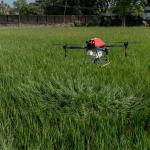Thrissur Pooram, often known as the "mother of all poorams," is one of Kerala's most recognizable temple festivals, held with grandeur and accuracy. In 2025, the festival is scheduled to take place on May 10, the Pooram day of the Medam month, according to the traditional Malayalam calendar. With centuries of cultural and religious significance, Thrissur Pooram continues to embody the syncretic spirit and precise organization that constitute Kerala's identity. The 2025 edition of this festival is expected to reinforce its legacy while responding to changing crowd control, safety, and sustainability requirements.
Origin and Historical Context
Thrissur Pooram was first introduced in the late 18th century by Sakthan Thampuran, the Maharaja of Cochin. The festival was created as a platform to bring together many temples in the region for a central celebration at the Vadakkunnathan Temple in Thrissur. It was a move to foster unity among many communities across social and geographical borders. The Vadakkunnathan Temple, an ancient shrine devoted to Lord Shiva, hosts this multi-temple convergence. Notably, Thrissur Pooram is not just a religious celebration, but also a meticulously planned cultural spectacle with processions, percussion groups, fireworks, and intricate ceremonies.
Structure of the Festival
The festival lasts over 36 hours and features various painstakingly prepared events. Two major temple groups take part in the main Pooram: Thiruvambady and Paramekkavu . Each temple group is accompanied by its own contingent of caparisoned elephants, percussionists, and devotees.
Highlight events
Kudamattam : A widely anticipated event in which both temple groups perform a rhythmic and competitive display of multicolored parasols on elephants.
Elanjithara Melam: A live percussion performance beneath the Elanji tree within the temple complex, involving hundreds of traditional artists playing instruments such as the chenda , ilathalam , kombu, and kuzhal .
Fireworks Display: Another big attraction is the early morning fireworks ( Vedikkettu ) that follow the main Pooram night. It is one of the largest pyrotechnic displays in South India, frequently lasting several hours.
Cultural Significance
Thrissur Pooram transcends religious barriers. Though based on Hindu traditions, it encourages participants from all communities, representing Kerala's inclusive spirit. It highlights Kerala's classical and folk traditions in their most authentic form. From expertly crafted elephant decorations to the musical grandeur of melams and panchavadyam , the festival demonstrates accuracy, discipline, and cultural harmony. Every aspect of Thrissur Pooram, from event sequencing to elephant selection, is guided by a rigorous methodology that has been perfected over decades. Despite its huge size, the event maintains its traditional character thanks to the use of time-honored practices.
Preparation and Logistics
Thrissur Pooram demands a collaborative effort by temple committees, local administration, police departments, cultural organizations, and volunteers. Crowd management, cleanliness, traffic diversion, and medical facilities are priority because to the large flood of people often exceeding a few hundred thousand attendances. Authorities are expected to improve security protocols, increase waste management tactics, and incorporate environmentally friendly practices such as reducing plastic usage and increasing the use of biodegradable materials by 2025. Efforts to digitize visitor information and incorporate mobile-based warnings for crowd movement and emergency services are also planned. The event is set to return in full force in 2025, following several years of scaled-back or cautious celebrations due to public health and environmental concerns. With advances in technology and civic infrastructure, tourists can expect a well-coordinated experience that mixes tradition with modern safety precautions. To avoid travel delays, arrive at least a day early to explore the city. Use public transportation or official shuttle services as many routes around the temple are closed to private vehicles. Dress modestly and respectfully, keeping in mind the cultural and religious context of the event. Follow official instructions and remain within designated zones during major events, especially during fireworks.
Thrissur Pooram makes substantial contributions to the regional economy. The festival supports a variety of livelihoods, including local merchants and artists, transportation providers, and hoteliers. It also serves as a venue for promoting Kerala's diverse artisan traditions, such as umbrella manufacturing, elephant caparisons ( nettipattam ), percussion instruments, and traditional apparel. Furthermore, the event promotes a unique type of civic participation. Residents from all social classes work together to host and manage the festival. Despite the crowds and intricacy, Thrissur Pooram is frequently praised as an example of municipal cooperation and cultural preservation. Thrissur Pooram 2025 is more than just a show; it is a celebration of Kerala's cultural, religious, and social fiber. It connects the ancient with the modern, preserving its spiritual essence while inviting modern sensibilities. As preparations begin, stakeholders are trying to ensure that this edition maintains the traditions that characterize it while also embracing innovation where appropriate.








